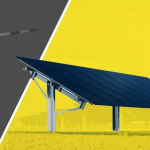Onshore wind is now the leading renewable energy technology in the U.S., and it’s still knocking competitors out of the way. Last year wind overtook hydropower in total generation, and 2020 is on track to be a record year for new wind farm construction.
But all other energy sources are losing ground to solar these days, wind included. Solar accounted for 40 percent of new U.S. generation capacity in 2019, its largest share in history. After 2020, solar’s lead over wind will widen rapidly in the U.S. market, Wood Mackenzie forecasts.
Large-scale solar is already cost-competitive with wind in many states, and analysts believe solar has an easier path toward further cost reductions. In Texas, home to nearly one-third of the country’s 100 gigawatts of wind capacity, there’s now more solar than wind in the interconnection queue.
Falling costs, steady efficiency gains and federal incentives have thrust solar to the center of the strategic plans of many American energy companies. Unsurprisingly, a significant number of the country’s wind energy giants are turning their attention to solar.
There are key differences between wind and solar development, but much of the necessary expertise is translatable. Solar projects can often be sited closer to population centers and rely less frequently on tough-to-build transmission lines. The U.S. is on track to install nearly 15 gigawatts of wind farms this year, a new record, according to Wood Mackenzie data. But the market is expected to decline considerably through the mid-2020s; by 2025 the annual solar market could be several times as large as its wind counterpart.
There will still be some wind-only developers, but others will need to move toward solar “if they want to survive,” said Colin Smith, senior solar analyst at Wood Mackenzie. “There are absolutely going to be losers” as the market pivots, he said.
As the renewables market gets ready for this reshuffle, GTM has highlighted five major wind developers that are betting a big chunk of their future on solar.





